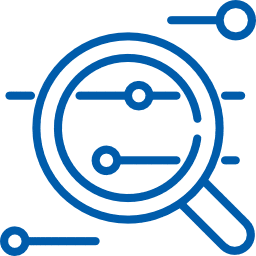The Critical Nature of Data Sharing to Aviation Safety
- Todd Thomas

- Sep 8, 2020
- 4 min read
Updated: Feb 20, 2024
Jennifer Caron, FAA Safety Briefing Copy Editor, stated in her recent article “Show Me the Data!” that “To improve safety we need to understand what people are seeing, learn from each other, and adapt.” As a past Director of Safety for several U.S. Part 121 supplemental carriers, I often found myself wondering if my counterparts at other carriers were experiencing similar safety events, issues, or concerns. I learned early on to develop a network of fellow safety professionals that I could compare experiences and bounce ideas off of. It was comforting, in a sense, to know that my carrier was not alone in experiencing certain safety issues. More importantly, I got ideas how to mitigate the risk from the hazards those safety issues produced.
Sharing data is critical to aviation safety! While we might be tempted, and it might make sense in certain areas, to hold our data close to the vest, data sharing should not be the exception but the rule. However, it is vitally important when sharing data that we protect the identity of those who voluntarily submit their data by de-identifying it. A commitment by the industry to this element of data collection is what keeps the data flowing.
In the past, I regularly attended an SMS Forum for Part 121 Carriers and was always impressed at the level of commitment to data sharing. This was a group that understood the value in sharing the good and the bad of their safety experiences for the benefit of others. I came away from each forum with much needed data that helped me successfully build an SMS at my own carrier.
While I believe most aviation safety professionals agree that sharing our data is a best practice, we also must guard against data overload. There is no reason to take time to collect data internally or from external sources if we are not going to do something useful with it. Our time as a safety professional gets easily consumed by the daily demands of the job and it is important that we allocate our time to projects that will provide useful results. Therefore, if you choose to collect safety data in your organization, it is vital to the health of your SMS to analyze the data you collect. It will help you make better decisions and should improve your level of safety.
Fortunately, the FAA and their industry partners have developed numerous initiatives to compile and analyze the data collected. Some of the programs offered include:
FOQA (Flight Operational Quality Assurance)
ASIAS (Aviation Safety Information Analysis and Sharing)
ASAP (Aviation Safety Action Program)
ASRS (Aviation Safety Reporting System)
Two important groups leverage all the safety data the FAA collects from industry: the Commercial Aviation Safety Team (CAST) and the General Aviation Joint Steering Committee (GAJSC). They use the data to monitor risks and proactively mitigate them. When we look at their results it is easy to see the success they have achieved. CAST received the prestigious 2008 Robert J. Collier Trophy and a 2006 Laurel Award from Aviation Week & Space Technology Magazine in recognition of its contributions in reducing the fatality risk for U.S. commercial aviation by 83 percent from 1998 to 2008. According to the GAJSC website, the goal for 2009-2018 was to reduce the fatal accident rate per 100,000 flight hours by 1% per year from January 1, 2009 to December 31, 2018, with no more than 1 fatal accident per 100,000 flight hours by 2018. The baseline for the improvement metric was the three-year baseline average for calendar years 2007, 2008, and 2009 at 1.12 per 100,000 flight hours. This safety improvement goal was realized in 2018 when the fatal accident rate was 0.89 fatal accidents per 100,000 flight hours.
Until recently, the GA community was not able to share their data with ASIAS. Fortunately, the FAA and their partners have bridged that gap by creating the National General Aviation Flight Information Database (NGAFID). Jennifer Caron notes in her article referenced previously “The NGAFID allows GA pilots to analyze and share their flight data in two ways. First, operators equipped with avionics capable of recording flight data, such as a Garmin G-1000, can upload flight and engine data anonymously into NGAFID. Devices that record flight data offer an easy, and free way for pilots to visually analyze flight performance for trends and changes over time to improve their flying. Second, pilots can share their data with NGAFID from a smart phone/tablet using the General Aviation Airborne Recording Device, or GAARD™, mobile app.”
The FAA says that more developments are on the way, including a complete redesign of FAASafety.gov with artificial intelligence capability that will use data to suggest customized training and flight activities. Additionally, FAA employees and the public will soon be able to access regulatory guidance documents through the new Dynamic Regulatory System (DRS). This new system will replace the Flight Standards Information Management System (FSIMS), and the Regulatory Guidance Library (RGL), to provide the most up to date data. DRS will consolidate information and data from more than a dozen other repositories into just one single resource for all users. Look for DRS to launch at the end of this year.
Baldwin recognizes the benefits of data sharing. One of our recent initiatives has been to develop the ability for safety data collected within Baldwin Safety Portals to be shared with other clients who agree to do so. Be watching soon for the release of this exciting upgrade to our system!
I encourage you to share your safety data anytime the opportunity arises! When it comes to aviation safety, we are truly all in this together! Fly safe!





Comments